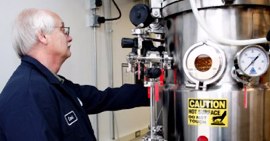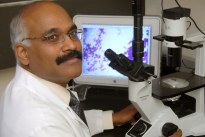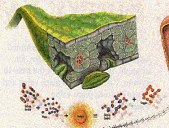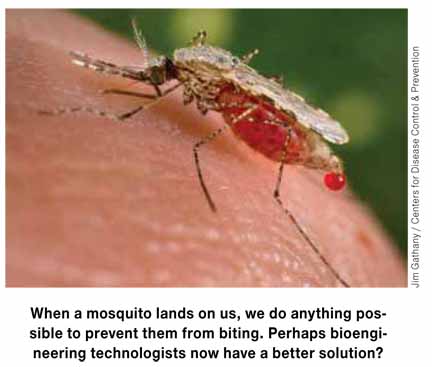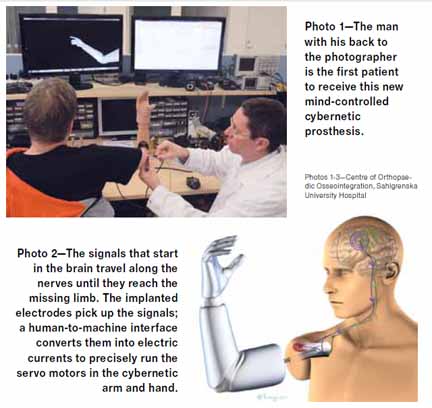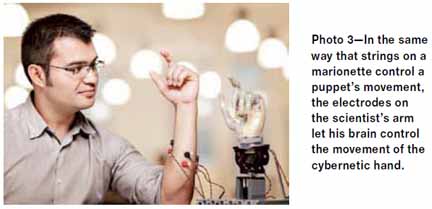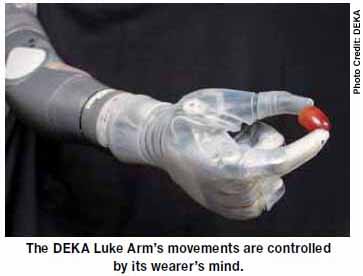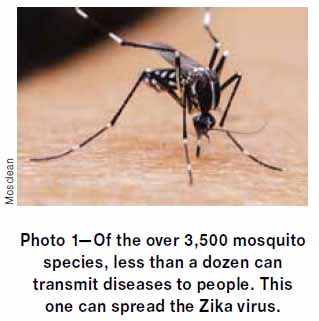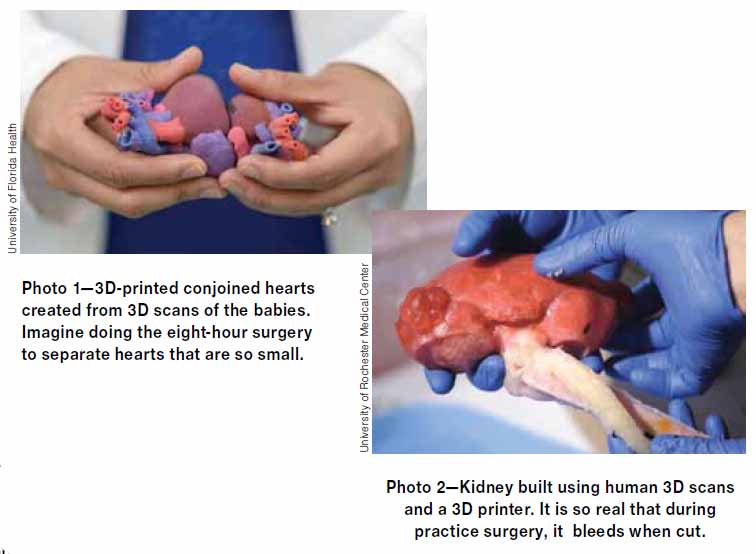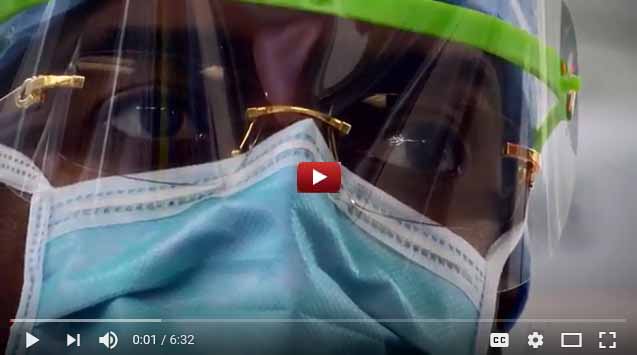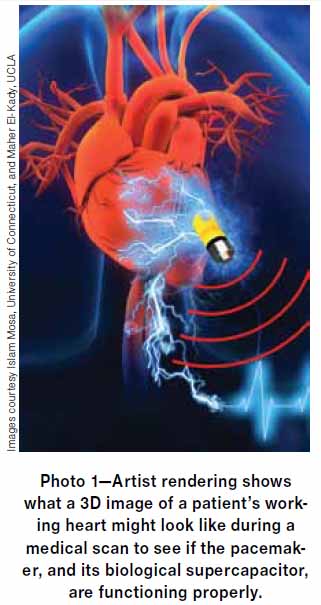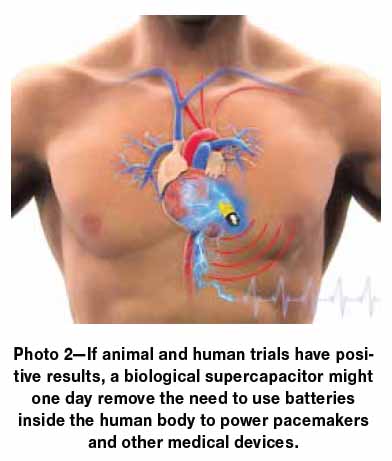Converting Garbage
into Biofuel
Coskata scientists have developed the technology needed to turn garbage and other discarded petroleum-based products into biofuels.
Sniffing dangerous odors
Team design an acceptable rat sensor that could sniff out and identify dangerous chemicals at infinitesimally small quantities.
Guardian Fish
Animals can serve as an early warning system. They can tell us when our air isn't safe to breathe or our water safe.
Bioprocessing Corn into Plastics
If you produce plastics from corn you create a plastic that is fully biodegradable.
Frankenstein Foods
Genetic engineering is the process of changing the information contained in the genes of plants and animals.


By Alan J. Pierce EdD

If you were ever bitten by a mosquito, and who hasn't, you will find the work of these doctors fascinating. Imagine a world without biting Mosquitos!!!!
Biotechnologists, at the laboratory level, have found a way to eliminate mosquito bites. They also have found a way to stop them from being able to carry Malaria. They are now working on preventing mosquitos from carrying other diseases.
Their solutions don't involve the use of insecticides. This column also explains why Mosquitos' bite and why some people are actually Mosquito magnets.
Biotechnologists, at the laboratory level, have found a way to eliminate mosquito bites. They also have found a way to stop them from being able to carry Malaria. They are now working on preventing mosquitos from carrying other diseases.
Their solutions don't involve the use of insecticides. This column also explains why Mosquitos' bite and why some people are actually Mosquito magnets.
TechDirections Magazine

Goto: TechDirections On Line
By Alan J. Pierce EdD

Teaching a Bacterium to Fight Global Warming
Scientists have pegged Carbon Dioxide (CO2) as the most troublesome greenhouse gas because of how long it will remain in our atmosphere. Atmospheric Carbon Dioxide is now at the highest level ever recorded.
Researchers at MIT have genetically altered a soil bacterium (see photo) so it can eat CO2 and digest it into a gasoline substitute. This fuel can be used instead of gasoline in cars without engine modifications.
Scientists have pegged Carbon Dioxide (CO2) as the most troublesome greenhouse gas because of how long it will remain in our atmosphere. Atmospheric Carbon Dioxide is now at the highest level ever recorded.
Researchers at MIT have genetically altered a soil bacterium (see photo) so it can eat CO2 and digest it into a gasoline substitute. This fuel can be used instead of gasoline in cars without engine modifications.
Teaching a Bacterium to Fight Global Warming
Controlling Cybernetic Machines with the Human Mind
The first cybernetic people will only have a few mind controlled parts. These parts will replace amputated arms, hands, or legs. People with these kinds of replacements are now common in Sci-Fi movies. This column explores how close we are to almost human androids and mind controlled cybernetic replacement parts for people.

Yesterday’s Science Fiction—Today’s Medical Breakthrough
By Alan J. Pierce EdD

The movie prop that was attached to Luke Skywalker’s body, after his arm was cut off by Darth Vader in the Star Wars movie The Empire Strikes Back, was pure fiction when that movie was released back in 1980. What was once bioengineering fiction is today’s medical breakthrough.
The DEKA Luke Arm (Photo 1) is FDA (U.S. Food and Drug Administration) approved. What makes this prosthetic so amazing is that its physical movements are controlled by its wearer’s mind, just like in the movie.
The DEKA Luke Arm (Photo 1) is FDA (U.S. Food and Drug Administration) approved. What makes this prosthetic so amazing is that its physical movements are controlled by its wearer’s mind, just like in the movie.
Once a Prop From Star Wars is Now
FDA Approved
FDA Approved
Reproduced with the permission of DEKA
Research & Development Corp.
Research & Development Corp.
FDA Approved Clinical Trial to Reverse Blindness
Scientists, doctors, and technologists working in a relatively new area of biotechnology, called optogenetics, have successfully reversed some forms of blindness in animals. If the first FDA approved clinical trial of this optogenetics surgery stays on schedule, 15 blind patients might soon be able to see again.
Time will tell if this surgery can partially restore some of the sight these participants lost to a disease called retinitis pigmentosa. The people who will be participating in this trial are all totally blind and have been this way for quite a long time.
This column describes the original Stanford University breakthrough and how the technology is being used to medically reverse blindness. If the surgery is successful the patients will be able to see again; just not all of the colors of a rainbow. The step from animal testing to human trials is a major step forward and only possible because of how successful and safe it was in animals.
Time will tell if this surgery can partially restore some of the sight these participants lost to a disease called retinitis pigmentosa. The people who will be participating in this trial are all totally blind and have been this way for quite a long time.
This column describes the original Stanford University breakthrough and how the technology is being used to medically reverse blindness. If the surgery is successful the patients will be able to see again; just not all of the colors of a rainbow. The step from animal testing to human trials is a major step forward and only possible because of how successful and safe it was in animals.
A Technology that Might Partially Cure Blindness
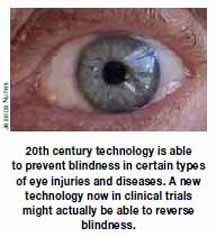
Using Technology to Kill Mosquitos
The FDA has just approved the use of genetically modified mosquitos to stop Zika
The FDA has just approved the use of genetically modified mosquitos to stop Zika
Scientists have found a way of stopping Zika, Malaria, and other disease carrying mosquitos by altering their DNA. With funding from the Gates Foundation Imperial College London has founded the Target Malaria Research Consortium to start releasing the Genetically Modified (GM) mosquitos that they have developed. They now have the approval of three African Governments and the FDA has also recently approved their genetic modification approach for use here in the US to fight Zika.
Their GM modified mosquitos can end these diseases by flying around and having sex with as many wild female mosquitos that they can find. How this DNA modification will affect wild mosquito populations makes for some fantastic reading.
Their GM modified mosquitos can end these diseases by flying around and having sex with as many wild female mosquitos that they can find. How this DNA modification will affect wild mosquito populations makes for some fantastic reading.
Improving Surgery with 3D Printed Practice Organs
Some Bleed When Cut
(Published February 2017 in TechDirections Magazine)
Some Bleed When Cut
(Published February 2017 in TechDirections Magazine)
Part 1
Separation of Conjoined Twins with the Help of a 3D Printer
This past June, in Gainesville Florida, two conjoined twins were separated after many practice planning sessions that used 3D printed organs that were created using 3D body scans of these babys' hearts.
Part 2
3D Printed Almost Human Organs -that Bleed
Doctors who are learning their craft are beginning to practice surgery using almost human 3D printed organs that will bleed fake blood when they are cut. These organs contain built in defects or cancers that must be surgically fixed or removed.
The Biological
Supercapacitor
Supercapacitor
The biological supercapacitor is a new material science breakthrough of a biologically friendly electrical energy storage device. It is completely made up of materials that are biologically compatible with our internal chemistry. This device is recharged by the animal or human body’s biological fluids and physical movements. Scientists at UCLA and the University of Connecticut worked together to develop this new biological supercapacitor. Their research was funded by the National Science Foundation and other bioengineering and health institutes.
They built their supercapacitor using layers of graphene and human proteins so their device contains no ingredients which are not biologically compatible with the human body. It is the inclusion of human proteins that makes their supercapacitor a biological device.
They built their supercapacitor using layers of graphene and human proteins so their device contains no ingredients which are not biologically compatible with the human body. It is the inclusion of human proteins that makes their supercapacitor a biological device.
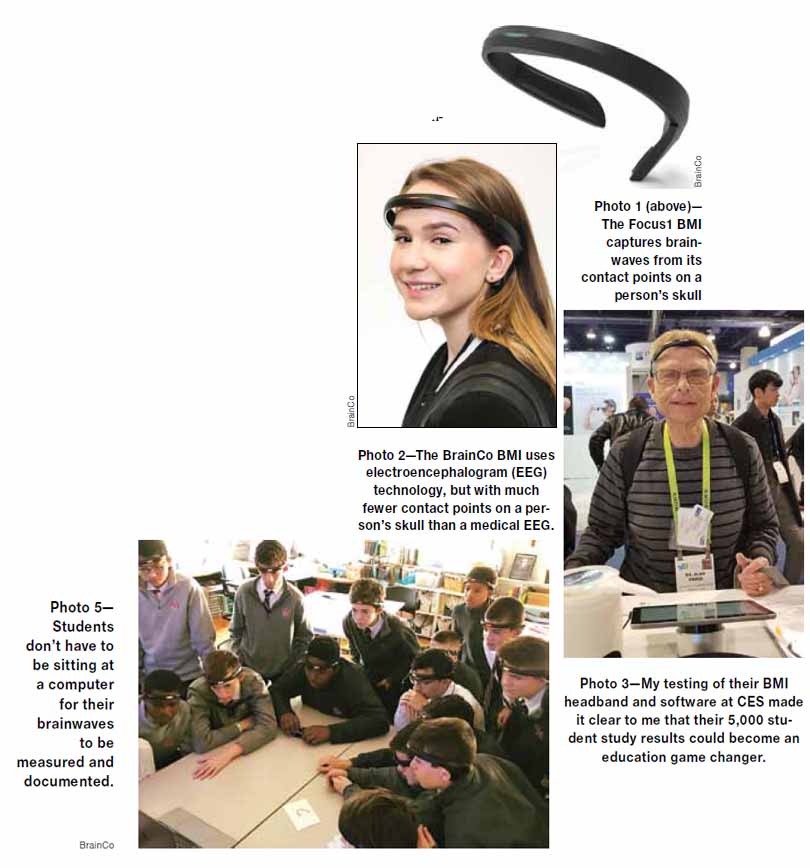
The Biological Supercapacitor
A power Source That Never Needs to be Replaced
(Published January 2018 in TechDirections Magazine)
A power Source That Never Needs to be Replaced
(Published January 2018 in TechDirections Magazine)

A synopsus of my March coverage of the topic:
Bio-Hacking a Person's Thoughts
Published March 2019 in TechDirections Magazine
For the full story click this link
Bio-Hacking a Person's Thoughts
Published March 2019 in TechDirections Magazine
For the full story click this link
Just Scroll Down
For More Biotechnology Breakthroughs
For More Biotechnology Breakthroughs

Recognizing the power of our brains is nothing new but trying to tap into our thoughts to create cyborg human enhancements is no longer just science fiction. One of Elon Musk’s newest technology initiatives is the creation of a new company named Neuralink. The goal he set for its scientists and engineers is the development of hardware that can allow the human brain to automatically interface its own thoughts with artificial intelligence programs on the person’s computer or smartphone.
At CES 2019 I found BrainCo a company that was founded in 2015 that has already made major strides in tapping human brain waves without the need for brain surgery. Before describing their brain-machine Interface (BMI) I feel it critical to indicate that the BrainCo technology was developed by scientists, engineers, and PhD students from Harvard University.
At CES 2019 I found BrainCo a company that was founded in 2015 that has already made major strides in tapping human brain waves without the need for brain surgery. Before describing their brain-machine Interface (BMI) I feel it critical to indicate that the BrainCo technology was developed by scientists, engineers, and PhD students from Harvard University.
The Focus1 headband that they created, see photo 1, is an electroencephalogram (EEG) interface that detects the electrical activity of a person’s brain through contact with a number of points on a person’s skull. The significant difference between the BrainCo BMI and a medical EEG is the number of contact points that are detecting a person’s brainwaves. You can see in Photo 2 that the BrainCo BMI only makes contact with a limited number of points on a person’s skull.
To interpret the brainwaves that their headband interface picks up, the scientists developed algorithms that convert the brain’s electrical signals into digital code that their computer programs can use to measure a wearer’s concentration and focus.
To interpret the brainwaves that their headband interface picks up, the scientists developed algorithms that convert the brain’s electrical signals into digital code that their computer programs can use to measure a wearer’s concentration and focus.
Click the "Select a Link" Below to Explore
our coverage of our tecnological world.
our coverage of our tecnological world.
A Copyright © on the date of publication exists for all articles and other material posted on this website. With proper citation you are welcome to use all the materials in your classroom.
Providing Resources on New & Emerging Tech for Technology Literacy
Alan J. Pierce EdD
pierceaj@techtoday.us
pierceaj@techtoday.us

